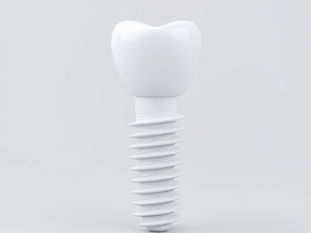
Understanding the Advantages of PRF in Dental Surgery for Extractions, Bone Grafts, and Implants
Aug 29
3 min read
0
3
0
Dental surgery can feel overwhelming for many patients, especially when it includes procedures like extractions, bone grafts, and implants. Thanks to advancements in dental technology, innovative methods now exist that can make the healing process smoother and quicker. One such studied method is Platelet-Rich Fibrin (PRF). This blog post will explore the significant benefits of PRF in dental surgery, focusing on its applications in extractions, bone grafts, and implants.
What is PRF?
Platelet-Rich Fibrin (PRF) is an innovative material created from the patient's own blood. By centrifuging a blood sample, it isolates a rich concentration of platelets and growth factors crucial for wound healing and tissue regeneration. This makes PRF an essential fully biocompatible and natural material in dental surgery.
PRF stands out because it is derived from the patient’s own body, which minimizes the risk of allergic reactions or rejection. This unique feature establishes it as a safe option to enhance healing for various dental procedures.
Benefits of PRF in Dental Extractions
After a dental extraction, patients can experience considerable trauma and pain. The use of PRF can offer many potential benefits in this sensitive situation:
Accelerated Healing: Studies show that patients who receive PRF during extractions heal slightly faster compared to those who do not. The high concentration of growth factors boosts tissue regeneration, enabling quicker return to normal activities.
Reduced Pain and Discomfort: The presence of growth factors in PRF significantly reduces inflammation. In clinical observations show that patients report less pain during recovery when PRF is utilized.
Improved Bone Regeneration: Proper healing of the bone is critical post-extraction. PRF potentially supports bone health. Clinicians report that in cases they are using PRF, they see a better healing of the bone within three months post-extraction.
Advantages of PRF in Bone Grafts
For many, bone grafting is a necessary procedure, especially for those with bone loss. Incorporating PRF into bone grafts could provides potential advantages:
Possible enhanced Graft Integration: PRF stabilizes and protects the graft material which enhance chances of integrations. Growth factors encourage the activity of osteoblasts, leading to more bone formation.
Reduced Risk of Complications: PRF could reduces complications by creating an optimal healing environment.
Minimized Post-Operative Discomfort: Similar to its benefits for extractions, patients undergoing bone grafts report less pain and swelling when PRF is applied. This creates a more positive recovery experience.
PRF in Dental Implants
Dental implants are an effective way to replace missing teeth, but their success hinges on the surrounding bone quality. PRF enhances the chances of successful implants:
Possible Improved Osseointegration: PRF significantly boosts the osseointegration process, where the implant fuses with the bone.
Better Recovery experience: Patients using PRF for their implants often experience a smother recovery, with less pain reported.
Practical Considerations for PRF Use
While the advantages of PRF in dental procedures are clinically notable, here are a few practical considerations:
Patient Selection: PRF may not be suitable for everyone. Dentists need to evaluate each patient’s overall health and specific dental situation to ensure PRF is a good choice.
Preparation and Procedure: Preparing PRF is straightforward and can be done in-office. A small blood draw allows for quick preparation using a centrifuge, typically taking just 30 minutes. This preparation time needs to be included in the overall treatment plan.
Cost Considerations: PRF is generally a cost-friendly option compared to other regenerative materials. Nevertheless, patients should discuss any potential additional costs with their dental professionals during consultations to avoid surprises.
The Future of Dental Surgery with PRF
The use of Platelet-Rich Fibrin (PRF) in dental surgery is paving the way for safer and more biological procedures, especially for extractions, bone grafts, and implants. Its ability to enhance healing, reduce pain, and boost success rates provides significant benefits to both patients and dental professionals.
As dental technology continues to advance, PRF's popularity will likely increase, offering patients more effective treatment alternatives. If you are considering any dental procedure, discussing the potential of PRF with your dental professional could be a wise step towards a smoother recovery journey.

Disclaimer
This article is for informational purposes only and does not constitute medical or dental advice. Each case is unique, always consult with your dentist, physician, or qualified healthcare provider before making decisions about your health or treatments.











